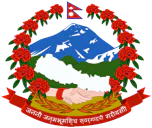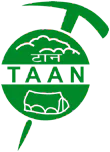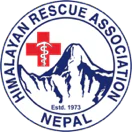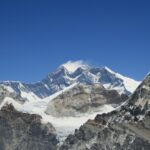
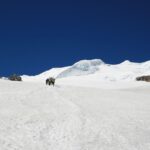
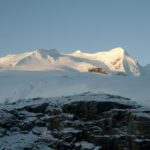
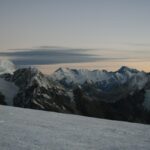
Explore the world's best trekking destination with native guides
Mera Peak Climb, a wonderful experience of a lifetime adventure achieving your goal and dream on top Mera Peak at 6,470 m/ 21,227 feet high. Which is one of the highest trekking peaks of Nepal.
Mera Peak Climb, truly a pure adventure which leads you away from mainstream trekking trail of Everest Base Camp, walking into pure wilderness into remote eastern Khumbu of Everest region.
Mera Peak a popular trekking peak due to its accessibility and less challenging mountain to climb, however all climbers should be physically and medically fit for the trek and climb of Mera Peak, and we have allowed enough days for acclimatization and practice for this super climb so that all our travelers can reach the summit safe and sound with help and support of our highly expert guides and staff.
All of trekking peaks of Nepal Himalaya, as Mera Peak is least challenging with less technical difficulties, the climbing grade from F to PD which means Facial Easy and Per Difficult, less technical, however walks and climb leads over moraine-ice and glaciers.
The grading taken from French and Swiss Alpine Climbing Classifications used world-wide on this alpine climb.
Mera Peak Climb starts with scenic and short flight to Lukla and then walking towards remote eastern Khumbu areas over scenic passes of Naulekh Himal to reach at pristine Hinku valley, with enough rest for acclimatization walk continues at the base of Mera Peak at Khare.
Climb leads following our expert guides where all necessary safety support will be added for safe climb and descend, enjoy the super views from the top of Mera Peak and walk back to Lukla after achieving your lifetime dreams and goal, and in high spirit with marvelous adventure on Mera Peak Climb.
The best seasons for Mera Peak Climb, are spring and autumn. Spring starts from March to May, most days are sunny but can get cloudy in the late afternoon. Chances of light snowfall with cold mornings and nighttime after Chutanga. But beautiful with wildflowers in seasonal bloom, especially rhododendrons of various colors, around Hinku Valley.
The next best season is autumn/fall, which begins in September and ends in November. One of the high seasons for views and pleasant walks, sunny days most of the time in autumn. But gets dark soon, due to short sunlight hours, cold morning, and late afternoon till nighttime. Could get snowfall around Hinku Valley and on climbing sometimes.
The route is straightforward from Lukla onwards. The trails lead to gradual and with steep climb to Khare at Mera Peak Base Camp. The climb over Kalo Himal ridge and crossing Zatwar-La Pass to enter Hinku Valley. Walking on forested path till Thagnak, and then into mountain wilderness to reach Mera Peak Base Camp at Khare. The climb to Mera Peak Summit is straightforward, with few smaller technical sections over ice and crevices to avoid. Rest of the climb is walking on snowy ridge line to the summit of Mera Peak. Requires good climbing gear for successful ascent and descent.
Day 01: Fly to Lukla 2, 846m and trek to Chutanga 3,430m – 04 hrs
Day 02: Trek to Thuli-Kharka 4,300m via Zatwar-La Pass – 06 hrs
Day 03: Trek to Kothey 4,182m – 04 hrs
Day 04: Trek to Thagnak 4,360m – 05 hrs
Day 05: Rest day at Thagnak for acclimatization.
Day 06: Trek to Khare at Mera Base Camp 5,300m – 05 hrs
Day 07: Rest day for acclimatization and practice climb.
Day 08: Climb to High Camp 5,780m – 04 hrs
Day 09: Climb Mera Summit 6,470m/ 21,227 feet – 08 hrs
Day 10: Trek to Thagnak 4,360m from Khare – 05 hrs
Day 11: Trek to Thuli Kharka 4,300m – 05 hrs
Day 12: Trek to Chutanga 3,430m – 05 hrs
Day 13: Trek to Lukla and transfer to a nice lodge – 04 hrs
Day 14: Fly to Kathmandu and transfer to hotel.
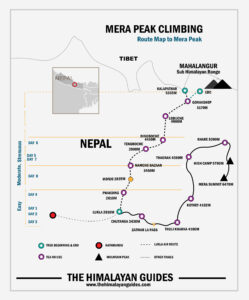
Breakfast, lunch, and dinner are prepared during the trek. The meals are basic, but will give you enough energy for your appetite. Fruit is also available after each meal.
During the trek, we stay in lodges or teahouses. These are simple in nature, but fully equipped. Do not expect too much luxury.
Most lodges till Khare have small hydro or from solar power to run electricity.
Trekkers can charge their electronic items and gadgets, a fee is charged as per hour for each items. As for internet and Wi-Fi, have connections, it depends upon the areas like around gorge, valley, and weather conditions.
It can be disturbing with bad receptions, the best place is Lukla and Chutanga, the other places en route. May works better with the local SIM, can be bought in Kathmandu at reasonable cost.
Yes, it is most important that all trekkers must obtain medical and travel insurance. Besides Mera Peak Climb, requires for all trek and climbs around Nepal Himalayas. Unfortunate incidence can happen at anytime and anywhere, where your medical insurance comes handy. In case of emergency evacuation using fastest means of transportation.
Helicopter Service is the quickest to bring the sick for proper medical treatment. As for Travel Insurance, sometimes even in the seasons of the year for trekking. The weather can be unpredictable, unfavorable which cause delay to reach the designated destinations. Sometimes due to bad weather condition, the road can be blocked by rock-fall and avalanches. On this type of circumstances, the guide and the company might have to re-route the trek to other safe destinations. For those who are not satisfied, can claim some of the money back from the Insurance companies.
Nearly all age group can join on this wonderful adventure, from minimum 16 to 70 years of age. But should be in good physical shape and in sound medical health to take the challenge climb to Mera Peak. As well coping with high altitude and rough trails to encounter.
Altitude Sickness of AMS (Acute Mountain Sickness) might occur to some people on higher altitude from 2,800 m onwards. For some above 3,000 m high where taking slow and drinking much fluid and water can overcome from high altitude sickness or AMS. Trekkers can take protective measures using Diamox or Acetazolamide tablets this prevent and reduce symptoms of AMS can lower headache in high altitude walks and climb.
It is not as popular as other trekking peaks around Everest and Annapurna region. But from the past few years, Mera Peak and Hinku Valley is drawing more trekkers, climbers and adventurers. In the past there was no lodges, due to mass flow of climber’s, lodges has been built at designated overnight stops.
For Trekking Peaks, all climbers should be in good physically and medically fit. As with positive mental attitude, having previous basic experience on climbing rocks, ice and snow. Besides physical fitness, should be in sound medical health. Beginners in mountaineering can enjoy Mera Peak climb, the best exercise and practice training. Before planning for major mountaineering expeditions in the near future, after getting experience on Mera Peak climb.
For Everest and other mountains around Khumbu areas Yaks and Zhopkyo a mixed breed and mules are used. Depending upon the areas of climbing peaks, for Mera Peak using porters to carry the loads up to Mera Peak base camps. After the climb, clearing the camp leaving nothing except for your foot prints.
All rubbish / garbage should be carried to proper disposal sites and hand over to SPCC (Sagarmatha Pollution Control Committee).
For Mera Peak Trek and Climb accommodation and meals in a simple lodge e throughout the trek. But for few days on Mera Peak Climb overnights in tented camp, all meals cooked and served by our expert cook.
The lodges en route Mera Peak Climb until Lukla, rooms are simple but clean with large warm dining having fire place. All lodges provides common bath and toilets.
One needs to pay extra for using hot showers, including for charging electronic items from the lodge.

